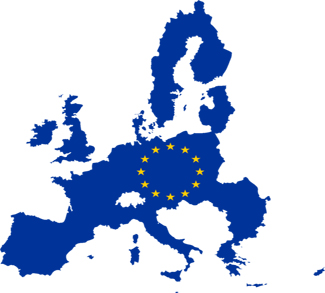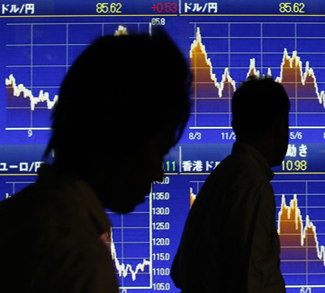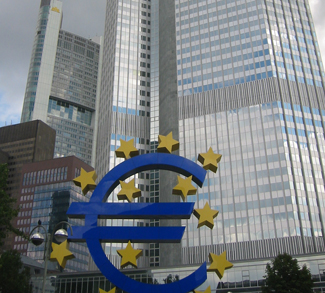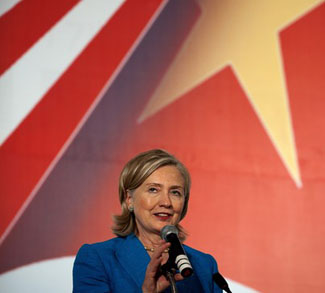How to draw the line between the recent and still unsettled EU crisis and Asia’s success story? Well, it might be easier than it seems: Neither Europe nor Asia has any alternative. The difference is that Europe well knows there is no alternative – and therefore is multilateral. Asia thinks it has an alternative – and therefore is strikingly bilateral, while stubbornly residing enveloped in economic egoisms. No wonder that Europe is/will be able to manage its decline, while Asia is (still) unable to capitalize on its successes.
Following the famous saying attributed to Kissinger: “Europe? Give me a name and a phone number!” (when – back in early 1970s – urged by President Nixon to inform Europeans on the particular U.S. policy action), the author is trying to examine how close is Asia to having its own telephone number.
For over a decade, many of the relevant academic journals are full of articles prophesizing the 21st as the Asian century. The argument is usually based on the impressive economic growth, increased production and trade volumes as well as the booming foreign currency reserves and exports of many populous Asian nations, with nearly 1/3 of total world population inhabiting just two countries of the world’s largest continent. However, history serves as a powerful reminder by warning us that economically or/and demographically mighty gravity centers tend to expand into their peripheries, especially when the periphery is weaker by either category. It means that any absolute or relative shift in economic and demographic strength of one subject of international relations will inevitably put additional stress on the existing power equilibriums and constellations that support this balance in the particular theater of implicit or explicit structure.
Lessons of the Past
Thus, what is the state of art of Asia’s security structures? What is the existing capacity of preventive diplomacy and what instruments are at disposal when it comes to early warning/ prevention, fact-finding, exchange mechanisms, reconciliation, capacity and confidence– building measures in the Asian theater?
While all other major theaters do have the pan-continental settings in place already for many decades, such as the Organization of American States (OAS) for the American continent, the African Union (AU) for Africa, the Council of Europe and Organization for Security and Cooperation in Europe (OSCE) for Europe, the state-of-arts of the largest world’s continent is rather different. What becomes apparent, nearly at the first glance, is the absence of any pan-Asian security/multilateral structure. Prevailing security structures are bilateral and mostly asymmetric. They range from the clearly defined and enduring non-aggression security treaties, through less formal arrangements, up to the ad hoc cooperation accords on specific issues. The presence of the multilateral regional settings is limited to a very few spots in the largest continent, and even then, they rarely include security issues in their declared scope of work. Another striking feature is that most of the existing bilateral structures have an Asian state on one side, and either peripheral or external protégé country on the other side which makes them nearly per definition asymmetric. The examples are numerous: the U.S.-Japan, the U.S.-S. Korea, the U.S.-Singapore, Russia-India, Australia-East Timor, Russia-North Korea, Japan-Malaysia, China-Pakistan, the U.S.-Pakistan, China-Cambodia, the U.S.-Saudi Arabia, Russia-Iran, China-Burma, India-Maldives, Iran-Syria, N. Korea-Pakistan, etc.
Indeed, Asia today resonates a mixed echo of the European past. It combines features of the pre-Napoleonic, post-Napoleonic and the League-of-Nations Europe. What are the useful lessons from the European past? Well, there are a few, for sure. Bismarck accommodated the exponential economic, demographic and military growth as well as the territorial expansion of Prussia by skillfully constructing complex networks of bilateral security arrangements in 19th century Europe. Like Asia today, it was not an institutionalized security structure, but a talented leadership exercising restraint and wisdom in combination with the quick assertiveness and fast military absorptions, concluded by the lasting endurance. However, as soon as the new Kaiser removed the Iron Chancellor (Bismarck), the provincial and backward-minded, insecure and militant Prussian establishment contested (by their own interpretations of the German’s machtpolitik and weltpolitik policies) Europe and the world in two devastating world wars. That, as well as Hitler’s establishment afterwards, simply did not know what to do with a powerful Germany.
Multilateral Constellations
By far, the largest Asian participation is with the Asia-Pacific Economic Cooperation (APEC), an organization engulfing both sides of the Pacific Rim. Nevertheless, this is a forum for member economies not of sovereign nations, a sort of a prep-com or waiting room for the World Trade Organization (WTO). To use the words of one senior Singapore diplomat who recently told me in Geneva the following: “what is your option here? …to sign the Free Trade Agreement (FTA), side up with the U.S., login to FaceBook, and keep shopping on the internet happily ever after…”
Two other crosscutting settings, the Organization of Islamic Cooperation (OIC) and Non-Aligned Movement (NAM), the first with and the second without a permanent secretariat, represent the well-established political multilateral bodies. However, they are inadequate forums as neither of the two is strictly mandated with security issues. Although both trans-continental entities do have large memberships being the 2nd and 3rd largest multilateral systems, right after the UN, neither covers the entire Asian political landscape – having important Asian countries outside the system or opposing it.
Further on, one should mention the Korean Peninsula Energy Development Organization (KEDO) (Nuclear) and the Iran-related Contact (Quartet/P-5+1) Group. In both cases, the issues dealt with are indeed security related, but they are more an asymmetric approach to deter and contain a single country by the larger front of peripheral states that are opposing a particular security policy, in this case, of North Korea and of Iran. Same was with the short-lived SEATO Pact – a defense treaty organization for SEA which was essentially dissolved as soon as the imminent threat from communism was slowed down and successfully contained within the French Indochina.
Confidence Building – an Attempt
If some of the settings are reminiscent of the pre-Napoleonic Europe, the Shanghai Cooperation Organization (SCO) and Cooperation Council for the Arab states of the Gulf (GCC) remind us of the post-Napoleonic Europe and its Alliance of the Eastern Conservative courts (of Metternich). Both arrangements were created on a pretext of a common external ideological and geopolitical threat, on a shared status quo security consideration. Asymmetric GCC was an externally induced setting by which an American key Middle East ally Saudi Arabia gathered the grouping of the Arabian Peninsula monarchies. It has served a dual purpose; originally, to contain the leftist Nasseristic pan-Arabism which was introducing a republican type of egalitarian government in the Middle Eastern theater. It was also – after the 1979 revolution – an instrument to counter-balance the Iranian influence in the Gulf and wider Middle East. The response to the spring 2011-13 turmoil in the Middle East, including the deployment of the Saudi troops in Bahrain, and including the analysis of the role of influential Qatar-based and GCC-backed Al Jazeera TV network is the best proof of the very nature of the GCC mandate.
The SCO is internally induced and more symmetric setting. Essentially, it came into existence through a strategic Sino-Russian rapprochement, based, for the first time in modern history, on parity, to deter external aspirants (the U.S., Japan, Korea, India, Turkey and Saudi Arabia) and to keep the resources, territory, present socio-economic cultural and political regime in the Central Asia, Tibet heights and the Xinjiang Uighur province in line.
The next to consider is the Indian sub-continent’s grouping, the South Asian Association for Regional Cooperation (SAARC). This organization has a well-established mandate, well-staffed and versed Secretariat. However, the organization is strikingly reminiscent of the League of Nations. The League is remembered as an altruistic setup which repeatedly failed to adequately respond to the security quests of its members as well as to the challenges and pressures of parties that were kept out of the system (e.g. Russia until well into the 1930s and the U.S. remaining completely outside the system, and in the case of the SAARC; China, Saudi Arabia and the U.S.). The SAARC is practically a hostage of mega confrontation of its two largest members, both confirmed nuclear powers; India and Pakistan. These two challenge each other geopolitically and ideologically. Existence of one is a negation of the existence of the other; the religiously determined nationhood of Pakistan is a negation of multiethnic India and vice versa. Additionally, the SAARC although internally induced is an asymmetric organization. It is not only the size of India, but also its central position that makes SAARC practically impossible to operate in any field without the direct consent of India, be it commerce, communication, politics or security.
For a serious advancement of multilateralism, mutual trust, a will to compromise and achieve a common denominator through active co-existence is the key. It is hard to build a common course of action around the disproportionately big and centrally positioned member which would escape the interpretation as containment by the big or assertiveness of its center by the smaller, peripheral members.
Multivector Foreign Policy
Finally, there is an ASEAN – a grouping of 10 Southeast Asian nations, exercising the balanced multi-vector policy, based on the non-interference principle, internally and externally. This, Jakarta-headquartered organization has a dynamic past and an ambitious current charter. It is an internally induced and relatively symmetric arrangement with the strongest members placed around its geographic center, like in case of the EU equilibrium with Germany-France/Britain-Italy/Poland-Spain geographically balancing each other. Situated on the geographic axis of the southern flank of the Asian landmass, the so-called growth triangle of Thailand-Malaysia-Indonesia represents the core of the ASEAN not only in economic and communication terms but also by its political leverage. The EU-like ASEAN Community Road Map (for 2015) will absorb most of the organization’s energy. However, the ASEAN has managed to open its forums for the 3+3 group/s, and could be seen in the long run as a cumulus setting towards the wider pan-Asian forum in future.
Before closing this brief overview, let us mention two recently inaugurated informal forums, both based on the external calls for a burden sharing. One, with a jingoistic-coined name by the Wall Street bankers – BRI(I)C/S, so far includes two important Asian economic, demographic and political powerhouses (India and China), and one peripheral (Russia). Indonesia, Turkey, Saudi Arabia, Pakistan, Kazakhstan, Iran are a few additional Asian countries whose national pride and pragmatic interests are advocating a BRIC membership. The G-20, the other informal forum, is also assembled on the Ad hoc (pro bono) basis following the need of the G-7 to achieve a larger approval and support for its monetary (currency exchange accord) and financial (austerity) actions introduced in the aftermath of still unsettled financial crisis. Nevertheless, the BRIC and G-20 have not provided the Asian participating states either with the more leverage in the Bretton Woods institutions besides a burden sharing, or have they helped to tackle the indigenous Asian security problems. Appealing for the national pride, however, both informal gatherings may divert the necessary resources and attention to Asian states from their pressing domestic, pan-continental issues.
Yet, besides the UN system machinery of the Geneva-based Disarmament committee, the UN Security Council, the Organization for the Prohibition of Chemical Weapons (OPCW) and International Atomic Energy Agency (IAEA or CTBTO), even the ASEAN nations (as the most multilateralized example) have no suitable standing forum to tackle and solve their security issues. An organization similar to the Council of Europe or the OSCE is still far from emerging on Asian soil.
Our history warns. Nevertheless, it also provides a hope: The pre-CSCE (pre-Helsinki) Europe was indeed a dangerous place to live in. The sharp geopolitical and ideological default line was passing through the very heart of Europe, cutting it into halves. The southern Europe was practically sealed off by notorious dictatorships; in Greece (Colonel Junta), Spain (Franco) and Portugal (Salazar), with Turkey witnessing several of its governments toppled by the secular and omnipotent military establishment, with inverted Albania and a (non-Europe minded) non-allied, Tito’s Yugoslavia. Two powerful instruments of the U.S. military presence (NATO) and of the Soviets (Warsaw pact) in Europe were keeping huge standing armies, enormous stockpiles of conventional as well as the ABC weaponry and delivery systems, practically next to each other. By far and large, European borders were not mutually recognized. Essentially, the west rejected to even recognize many of the Eastern European, Soviet dominated/installed governments.
Unresolved Territorial Disputes
Currently in Asia, there is hardly a single state which has no territorial dispute within its neighborhood. From the Middle East, Caspian and Central Asia, Indian sub-continent, mainland Indochina or Archipelago SEA, Tibet, South China Sea and the Far East, many countries are suffering numerous green and blue border disputes. The South China Sea solely counts for over a dozen territorial disputes – in which mostly China presses peripheries to break free from the long-lasting encirclement. These moves are often interpreted by the neighbors as dangerous assertiveness. On the top of that Sea resides a huge economy and insular territory in a legal limbo – Taiwan, which waits for a time when the pan-Asian and intl. agreement on how many Chinas Asia should have, gains a wide and lasting consensus.
Unsolved territorial issues, sporadic irredentism, conventional armament, nuclear ambitions, conflicts over exploitation of and access to the marine biota, other natural resources including fresh water access and supply are posing enormous stress on external security, safety and stability in Asia. Additional stress comes from the newly emerging environmental concerns, that are representing nearly absolute security threats, not only to the tiny Pacific nation of Tuvalu, but also to the Maldives, Bangladesh, Cambodia, parts of Thailand, of Indonesia, of Kazakhstan and of the Philippines, etc. All this combined with uneven economic and demographic dynamics of the continent are portraying Asia as a real powder keg.
Cold War Exiled in Asia
As is well known, the peak of the Cold War was marked by the mega geopolitical and ideological confrontation of the two nuclear superpowers whose stockpiles by far outnumbered the stockpiles of all the other nuclear powers combined. However enigmatic, mysterious and incalculable to each other, the Americans and Soviets were on opposite sides of the globe, had no territorial disputes, and no record of direct armed conflicts.
The Asian nuclear constellation is distinguished insofar that each of the holders has a history of hostilities – armed frictions and confrontations over unsolved territorial disputes along the shared borders, all combined with the intensive and lasting ideological rivalries. The Soviet Union had bitter transborder armed frictions with China over the demarcation of its long land border. China has fought a war with India and has acquired a significant territorial gain. India has fought four mutually extortive wars with Pakistan over Kashmir and other disputed bordering regions. Finally, the Korean peninsula has witnessed the direct military confrontations of Japan, USSR, Chinese as well as the U.S. on its very soil, and remains a split nation under a sharp ideological divide.
On the western edge of the Eurasian continent, neither France, Britain, Russia nor the U.S. had a (recent) history of direct armed conflicts. They do not even share land borders.
Finally, only India and now post-Soviet Russia have a strict and full civilian control over its military and the nuclear deployment authorization. In the case of North Korea and China, it is in the hands of an unpredictable and non-transparent communist leadership – meaning, it resides outside democratic, governmental decision-making. In Pakistan, it is completely in the hands of a politically omnipresent military establishment. Pakistan has lived under a direct military rule for over half of its existence as an independent state.
A general wisdom of geopolitics assumes the potentiality of threat by examining the degree of intensions and capability of belligerents. However, in Asia this theory does not necessarily hold the complete truth: Close geographic proximities of Asian nuclear powers means shorter flight time of warheads, which ultimately gives a very brief decision-making period to engaged adversaries. Besides a deliberate, a serious danger of an accidental nuclear war is therefore evident.
Multilateral Mechanisms
One of the greatest thinkers and humanists of the 20th century, Erich Fromm wrote: “…man can only go forward by developing (his) reason, by finding a new harmony…”
There is certainly a long road from vision and wisdom to a clear political commitment and accorded action. However, once it is achieved, the operational tools are readily at disposal. The case of Helsinki Europe is very instructive. To be frank, it was the over-extension of the superpowers who contested one another all over the globe, which eventually brought them to the negotiation table. Importantly, it was also a constant, resolute call of the European public that alerted governments on both sides of the default line. Once the political considerations were settled, the technicalities gained momentum: there was – at first – mutual pan-European recognition of borders which tranquilized tensions literally overnight. Politico-military cooperation was situated in the so-called first Helsinki basket, which included the joint military inspections, exchange mechanisms, constant information flow, early warning instruments, confidence–building measures mechanism, and the standing panel of state representatives (the so-called Permanent Council). Further on, an important clearing house was situated in the so-called second basket – the forum that links the economic and environmental issues, items so pressing in Asia at the moment.
Admittedly, the III OSCE Basket was a source of many controversies in the past years, mostly over the interpretation of mandates. However, the new wave of nationalism, often replacing the fading communism, the emotional charges and residual fears of the past, the huge ongoing formation of the middle class in Asia whose passions and affiliations will inevitably challenge established elites domestically and question their policies internationally, and a related search for a new social consensus – all that could be successfully tackled by some sort of an Asian III basket. Clearly, further socio-economic growth in Asia is impossible without the creation and mobilization of a strong middle class – a segment of society which when appearing anew on the socio-political horizon is traditionally very exposed and vulnerable to political misdeeds and disruptive shifts. At any rate, there are several OSCE observing nations from Asia; from Thailand to Korea and Japan, with Indonesia, a nation that currently considers joining the forum. They are clearly benefiting from the participation.
Consequently, the largest continent should consider the creation of its own comprehensive pan-Asian multilateral mechanism. In doing so, it can surely rest on the vision and spirit of Helsinki. On the very institutional setup, Asia can closely revisit the well-envisioned SAARC and ambitiously empowered ASEAN forums. By examining these two regional bodies, Asia can find and skillfully calibrate the appropriate balance between widening and deepening of the security mandate of such future multilateral organization – given the number of states as well as the gravity of the pressing socio-political, environmental and politico-military challenges.
In the age of unprecedented success and the unparalleled prosperity of Asia, an indigenous multilateral pan-Asian arrangement presents itself as an opportunity. Contextualizing Hegel’s famous saying that “freedom is…an insight into necessity” let me close by stating that a need for the domesticated pan-Asian organization warns by its urgency too.
Clearly, there is no emancipation of the continent; there is no Asian century, without the pan-Asian multilateral setting.
Prof. Anis H. Bajrektarevic is a contributor to the Geopoliticalmonitor, and Chairman of the Intl. Law & Global Pol. Studies. He is also the author of the forthcoming book ‘Is there life after Facebook’, Addleton Academic Publishers, NY.




